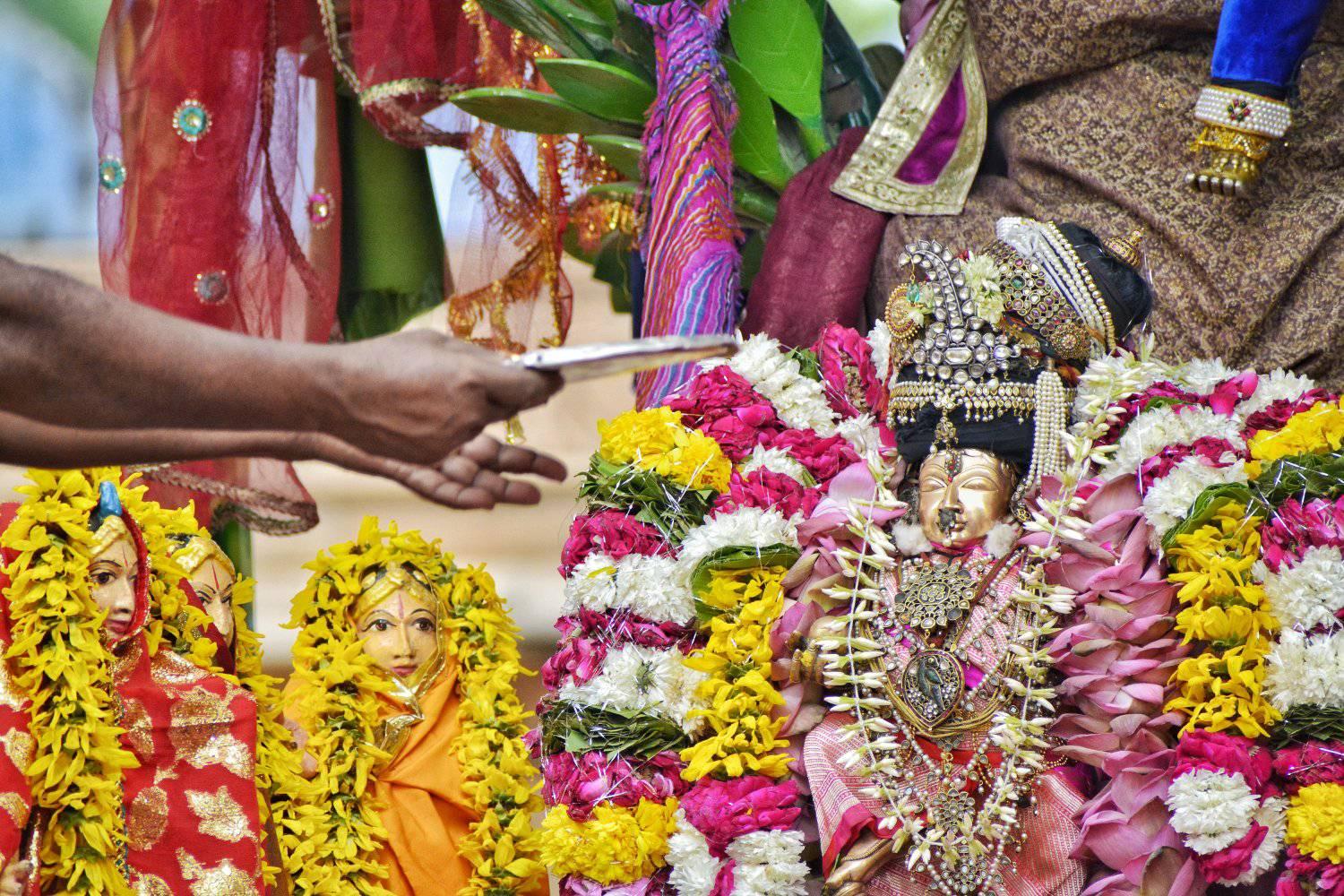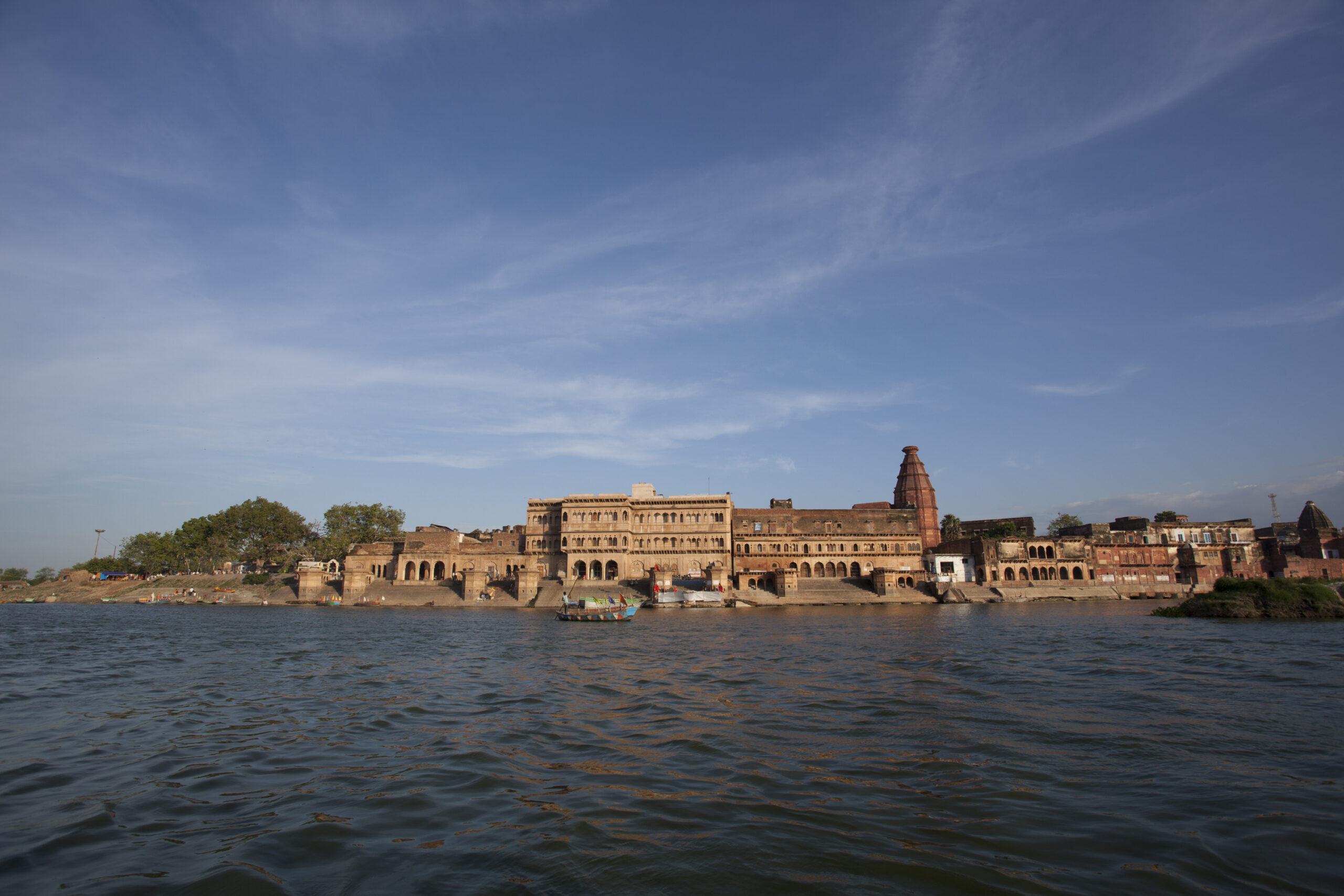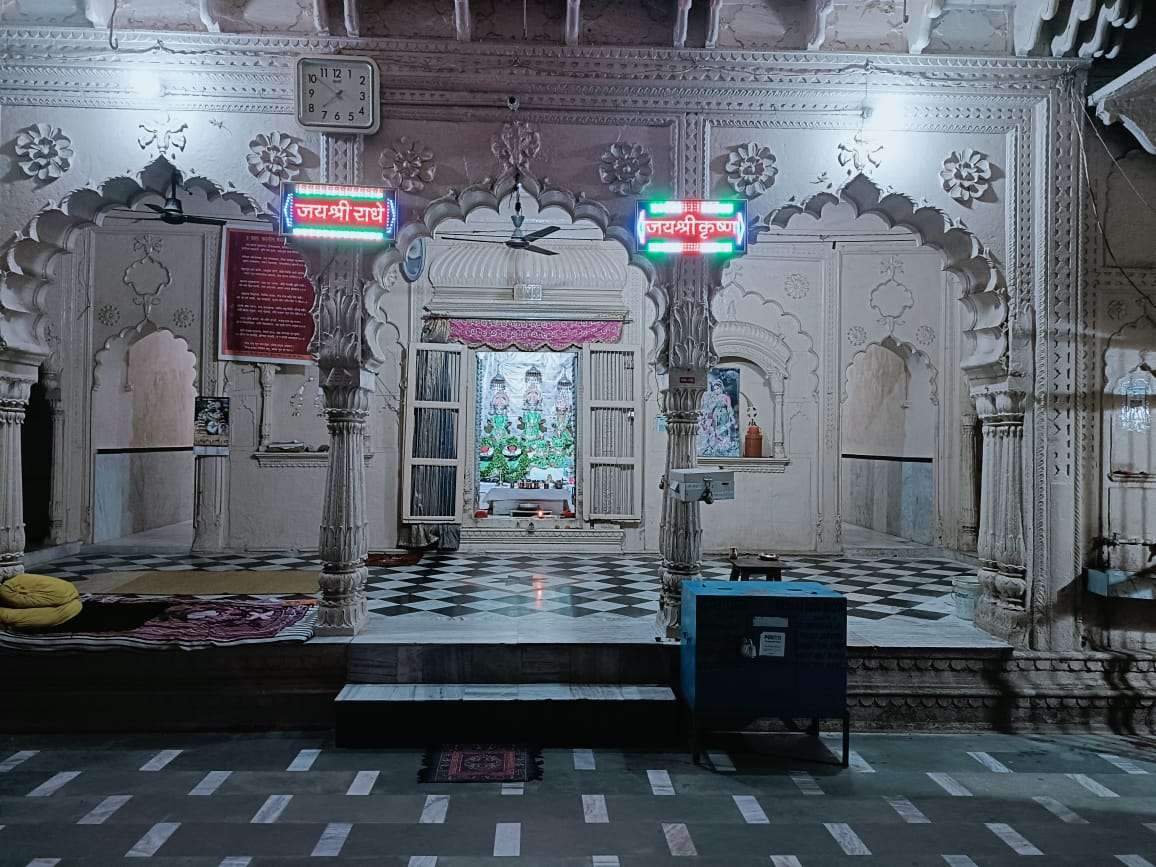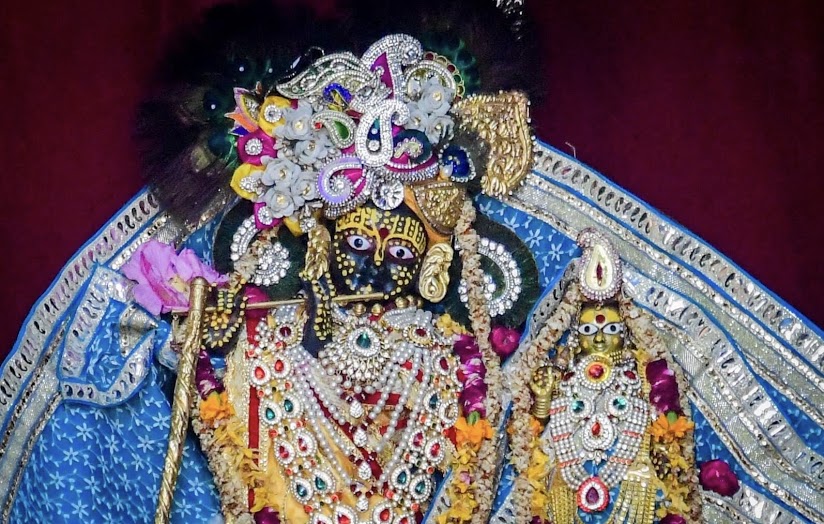Kartik Braj Darshan with Vrindavan Today (Day 31): Rang ji Mandir
2021.11.16(Vrindavan Today News) :The Rang ji Mandir with its eight stately yet delicate south-Indian style gopurams (grand entranceways) proudly commands the surrounding area. This opulent temple of the Shri Vaishnava sampradaya, a disciple succession which originates from the goddess of wealth Shri Devi or Lakshmi ji, was constructed in 1851. It was built at a cost of Rs 45 lakhs, a huge fortune in those days, by Seth Radha Krishna and Seth Govindadasa of Madras under the guidance of their guru Swami Rangacharya. According to F.S. Growse, the past Mathura Collector, these two Seths were converts from Jainism. This temple is modeled after the original Ranganatha Temple of Lord Vishnu in Trichy at Shri Rangam Kshetra (Tamil Nadu), the largest temple in India.
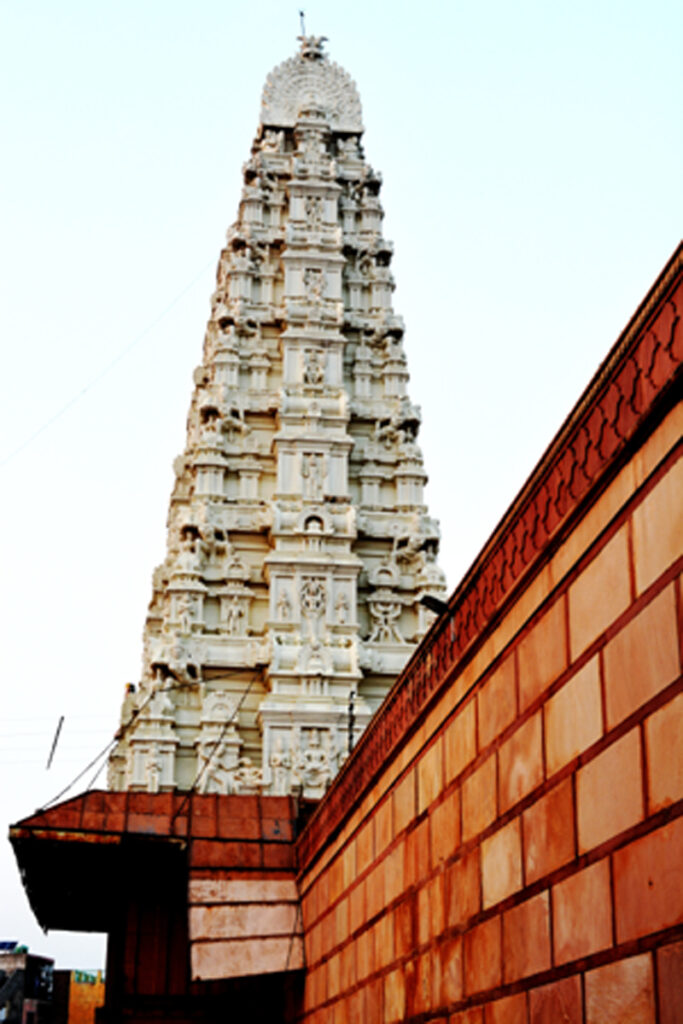
The detailed sculptures on the gopurams, the brilliant golden-colored Garuda Stamba which stands over sixty feet in height, the opulent bathing kunda or pushkarini , the intoxicatingly melodic shehnai horns blown for the pleasure of the Lord, and the Deity’s lush bagh or garden all serve to inspire the pilgrim of Vaikuntha South Indian style. The area around the temple is huge, the outer wall measuring 773 feet by 440 feet. A touch of Vrindavan architecture has been displayed at the main gateways, possibly the only marriage of Vrindavan and South Indian style architecture in existence.
The utsava murti (festival Deity) of Lord Ranganath is brought out twice daily (morning and evening) from Chaitra Krishna 2 to 12 for observance of the Brahmotsava Festival. This splendid mela represents the desire of Rangji’s devotees to follow the perfect example of Lord Brahma, the leader of the devatas, in his worship of Lord Vishnu. A large hand carved chariot of red sandalwood; intricately painted once yearly, carries the utsava murti of Lord Ranganatha to His ‘bagh’ on the morning of Chaitra Krishna 8 Enlivened by the light of many torches the billowing smoke of incense, the soothing melodic strains of horns and sharp peats of drums, The jubilant crowd pulls the worship able form of the Lord to His garden. In the evening of the tenth day of Chaitra Krishna a spectacular display of fireworks delights the crowd.
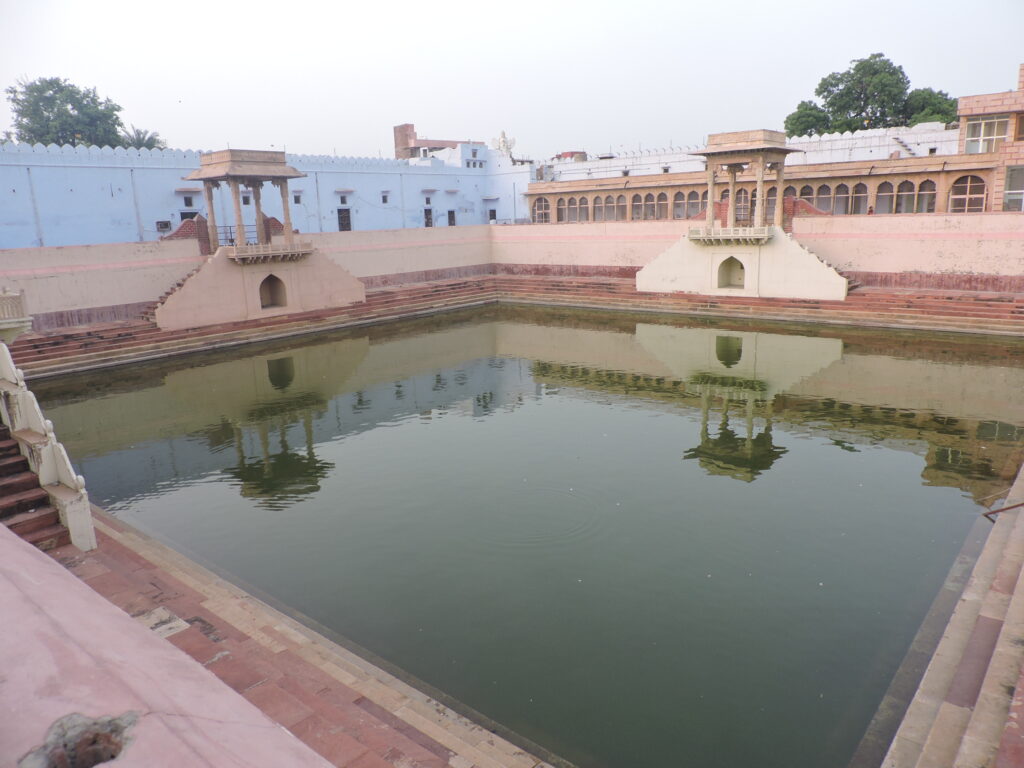
Ranga ji has a wide variety of either silver or richly gilded vahanams or asanas (thrones) which are used to carry Him on days of Brahmotsava when the huge chariot is in storage. They include the thrones of Surya, the sun god; Chandra, the moon god; Garuda , the eagle mount or vahanam of Lord Vishnu; Hanuman, the powerful monkey devotee of Rama; a horse; an elephant; a lion; a swan; an eight-legged sarabha creature; and even a celestial tree. These thrones are fixed upon a smaller chariot which is also pulled by the crowd. English and Hindi leaflets are available from the Temple giving the corresponding calendar dates of Brahmotsava festival each year.
Another festival observed here is a dramatic presentation of the Gajendra moksha incident as narrated in the eighth canto of the Bhagvata. This is a classical performance of fight that took place between Gajendra, the elephant king and the Huhu, a Gandharva who was cursed by a sage to live as a crocodile. In the play Lord Vishnu at last saves Gajendra who has been praying for help for a long time. Vishnu kills the crocodile with His sudarshana discus and naturally, by the Lord’s grace, the crocodile becomes released from the curse resumes his beautiful celestial form of a Gandharva once gain. This play takes place in the temple’s bathing tank on the full Moon day of Ashadha.


